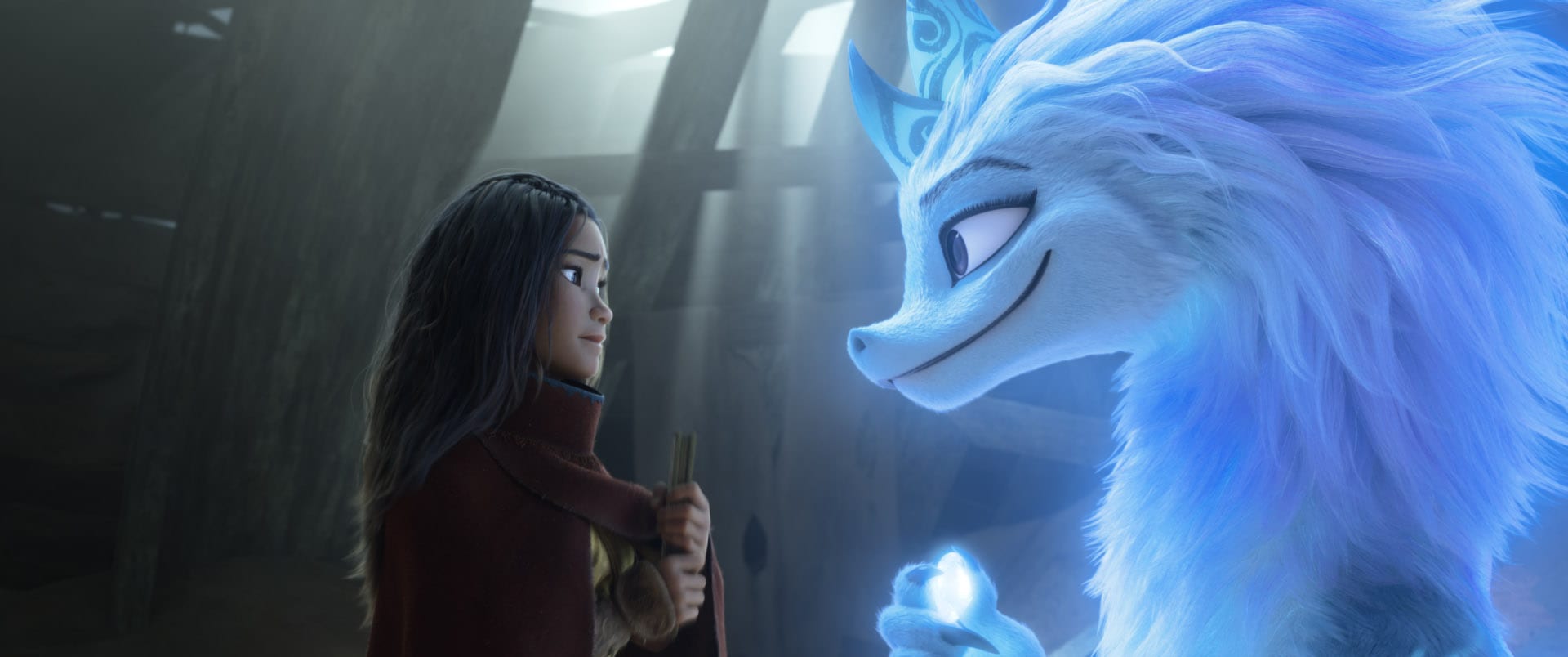Grief and trust. These are the central themes of Raya and the Last Dragon, a film that expertly parallels our own divided world to convey a message on the importance of community.
The kingdom of Kumandra has been left devastated after the return of the Druun, shadow monsters that petrify everything in their path. The story follows Raya (Kelly Marie Tran) on her journey to defeat the monsters and bring hope back to the land. Raya and the Last Dragon is directed by Carlos López Estrada and Don Hall, with Qui Nguyen and Adele Lim co-writing the screenplay.
The animation in Raya is outstanding. From apocalyptic deserts to lush vegetation, every frame of this film is carefully thought out. Because of this attention to detail, the viewer is immersed in an expansive world that feels completely realistic yet entirely magical. While the technical achievements allow the film to look as it does, the beauty of the landscapes is achieved through the cinematography. The soft, warm light that illuminates some of the frames stylistically distinguishes Raya from other Disney projects. For example, while Moana (2016) is brightly coloured, Raya uses a softer palette, which works splendidly in delivering a more nuanced story. Cinematography and animation are matched by the energetic stunt coordination, showcased during action scenes. Smartly woven into the storytelling, these greatly assist in characterisation by allowing each character their own distinct style, ranging from realistic one-on-one combat to a baby teaming up with three monkeys.
Disney films tend to follow an individualistic philosophy, where the hero discovers that the real power was within them all along. Because Raya begins her journey as a fully accomplished warrior, however, her arc is instead about learning to trust those around her. This focus on community is essential to understanding the central theme of the film: overcoming grief. As the Druun relentlessly devour countless victims, the survivors are left hurt, scared and alone. So many Disney princesses witness the death of a loved one, yet rarely does the story hinge on dealing with that loss. Nguyen and Lim, by contrast, chose to focus on how isolation and grief can harm the ability to trust one another, thereby leading to more pain. While the humans are trapped by this overwhelming feeling of mistrust, it takes a non-human character, Sisu (Awkwafina), to push them out of their emotional isolation and towards healing. The ultimate commitment to this message is demonstrated with the film’s resolution, which sees Raya taking a step back from the heroic last effort to save the world.
At times, this central message of unity is diluted by an overloaded script, which often diverts from the emotional core of the film. This is understandable: the world of this story is rich, and the mythology intricate. However, the film could have been more effective had it focused more exclusively on the experiences of both Raya and antagonist Namaari (Gemma Chan). Nonetheless, the ending remains incredibly effective, and the diversions are entertaining in their own right.
The movie continues in Disney’s tradition of combining different real-world cultures into one fantastical setting. Details from the Philippines, Thailand and other countries are all presented as one overall representation of Southeast Asian culture. Because of the thematic relevance of unity, this approach is justified: having a combination of different Southeast Asian cultures presented as one feels like an intentional and effective choice. However, the wider picture contextualises some of the criticism directed at the film. For instance, many have been justifiably angered by the lack of Southeast Asian voices in the cast. A similar approach was taken in Moana, where a non-specific representation of Polynesian culture was favoured instead of a more accurate approach. Therefore, this film is likely to disappoint those looking for an accurate portrayal of their own culture. Going forward, Disney should begin to treat these cultures separately, to give each one a fuller and more authentic representation. It is also worth noting that the studio rarely takes the same approach with films set in Europe, such as Beauty and the Beast.
Ultimately, though, Raya and the Last Dragon remains an admirable achievement in animation and storytelling. Additionally, it’s a step in the right direction in terms of representation.
The Verdict
The skilful world-building of Raya and the Last Dragon at times distracts from its core themes of trust and grief. Nonetheless, its earnest message and spectacular animation help make Raya a worthy entry into the new era of Disney princesses.
Rating: 8/10
Words By Elisabetta Pulcini
Support The Indiependent
We’re trying to raise £200 a month to help cover our operational costs. This includes our ‘Writer of the Month’ awards, where we recognise the amazing work produced by our contributor team. If you’ve enjoyed reading our site, we’d really appreciate it if you could donate to The Indiependent. Whether you can give £1 or £10, you’d be making a huge difference to our small team.
